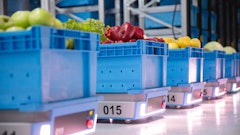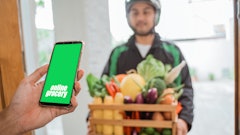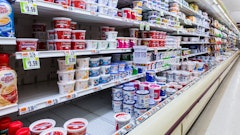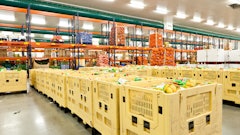
Overall grocery sales in the United States are forecast to grow at a compound annual growth rate (CAGR) of 1.6% through 2028, considerably slower than the 5.6% posted over the five years ending in 2023, which were powered by the pandemic and price inflation. While slower growth is expected for overall grocery sales, the online segment (aka e-grocery) is projected to increase at a CAGR of 4.5%, more than three times faster than the 1.3% rate anticipated for the in-store segment over the next five years, according to the new report developed by Brick Meets Click and sponsored by Mercatus.
“Two factors are creating significant headwinds that impact our e-grocery forecast. First, the market is maturing. Nearly all of the people interested in online grocery shopping have used it at least once by now,” says David Bishop, partner at Brick Meets Click. “Second, even though inflation has recently fallen faster than expected, its cumulative effect continues to drive a flight-to-value behavior in grocery shopping and that will slow topline sales growth.”
“It’s clear that creating stronger connections with existing customers is essential to driving higher spending and order activity,” says Mark Fairhurst, global chief growth officer at Mercatus. “Expanding personalization efforts to include targeted offers or tailored recommendations, will play a vital role in increasing repeat purchase behavior and e-grocery sales.”
Key takeaways:
- Total e-grocery sales, which includes delivery, pickup, and ship-to-home, are projected to reach almost $120 billion annually by the end of 2028 and account for 12.7% of total grocery sales in the United States, up 170 basis point (bps) vs. 2023, the starting point for the five-year forecast. Excluding ship-to-home, given that most grocers do not offer the service, Delivery and Pickup sales, combined, will represent 10.7% of total grocery sales in five years.
- Also, competing in a slower-growth online market will likely motivate more grocery retailers to focus on driving demand toward their first-party (1P) services to better control operating expenses and the customer experience. Given that third-party (3P) marketplaces for supermarkets represented more than half of e-grocery sales on average in 2023, this shift will create additional headwinds for sales growth as a basket of comparable groceries on the 1P platform costs on average 9% less than buying from the banner on a 3P marketplace (excluding charges, fees, and tips).
- Relative to the ways that customers receive e-grocery orders, pickup sales are expected to grow faster (5.4%) than delivery (4.4%) or ship-to-home (2.8%) through 2028, and pickup is expected to remain the dominant method, accounting for nearly 47% of all online grocery sales at the end of five years.
- The forecast also identifies order frequency as the most important growth driver through 2028, as expanding the active user base will prove more challenging. In addition, building higher average order values will largely be the result of a customer mix that includes a higher share of repeat customers, who spend more compared to first-time customers.


























